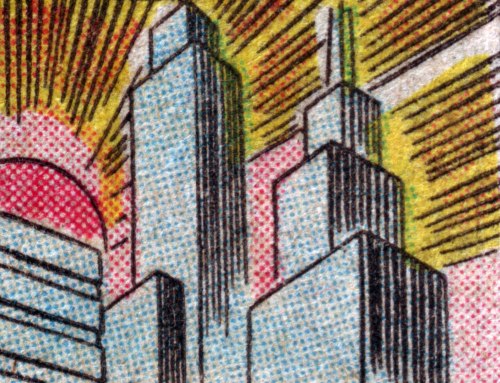
One of the first Japanese sayings I learned was “Chiri mo tsumoreba, yama to naru,” “Pile up dust and it becomes a mountain.”
At his incredible blog Four Color Process, John Hilgart continues to mine the gap between comic book art and comic book printing. Looking back over his year’s collection of images, often tiny details pulled from the seemingly insignificant corners and backgrounds of old comic book frames, he’s come up with an excellent and expansive essay. He doesn’t, but I’ll call it the 4CP Manifesto:
Gone are the page, the frame, the plot, and localized contextual meaning. What remain are the color process and what are generally called the “details” of comic book art. These are the two lowest items on the totem pole of comic book value – poor reproduction and the least important, most static elements of the art itself. Our proposition is that these elements are important and aesthetically compelling.
Who is responsible for this art? At the level of a square inch of printed comic book, no one was the creative lead. 4CP highlights the work of arbitrary collectives that merged art and commerce, intent and accident, human and machine. A proper credit for each image would include the scriptwriter, the penciller, the inker, the color designer, the paper buyer, the print production supervisor, and the serial number of the press. Credit is due to all of them, to differing and unknowable degrees, for every square inch of every old comic.
[image: Gotham Dawn, via 4CP]
In Defense of Dots: the lost art of comic books [4cp.posterous.com, thanks city of sound for the heads up]
Previously: Four Colour Process [greg.org]
